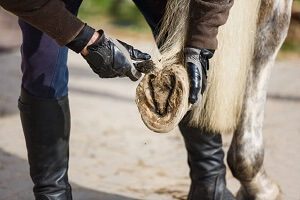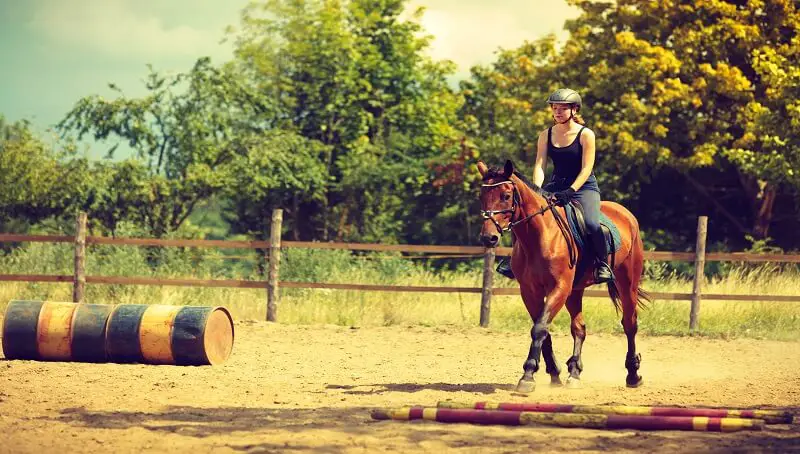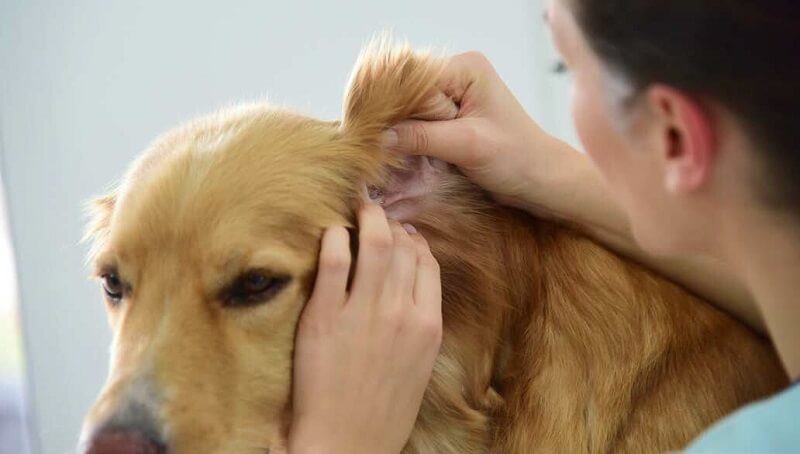Does your horse stumble while riding or walking? All horses stumble occasionally, just as we stumble sometimes, for no reason at all. Horses may stumble or trip over for a variety of different reasons.
The most common reason is similar to why we also take the wrong step if the ground is bumpy, slippery, or uneven. Some horses are wiser than others and know how to keep their balance on rough terrain. Others need to learn this.
The horse’s physical condition
If your horse is disinterested in his work or is tired, he might stumble. Muscle fatigue can cause stumbling and dragging of the legs. This is more common in unphysically fit horses or young horses. Young horses, unaccustomed to wearing a rider, can become unbalanced and stumble. This will stop once the horse understands how to balance the weight it carries.
A horse can also stumble more often with an unbalanced rider. A good rider can help his horse keep its balance, especially when walking becomes uneven. Improving your riding skills and improving your physical shape can help prevent stumbling and tripping in horses.
Exhaustion can also be a cause of frequent stumbles. This can often be seen in horses that have participated in long-distance walks or hiking rides over several kilometers. A tired and overworked horse can no longer hold his legs well, cannot lift them properly, and stumbles as a result.
Choose a proper saddle for the horse
You might also like my articles about:
An improper saddle is also a common reason why a horse stumbles. If it slips or squeezes, or even coerces the shoulder muscle due to a mismatch, the horse cannot move freely. This shortens the step and eases the stumbling. Painful areas on the back caused by the wrong saddle can also lead to stumbling, as the horse winces when the pain suddenly appears. Evaluate the suitability of the saddle or consult with a specialist in mounting it so that your horse is more comfortable. Improper horse saddle is responsible for several types of problems, physical and behavioral.
Proper care of the hooves
 Make sure the horse’s hooves are cut regularly and properly. If the hooves are too grown, your horse might stumble on them. Ask your farrier to reevaluate the angle at which the hooves are cut, and the type and weight of the horseshoes if the horse is shoed.
Make sure the horse’s hooves are cut regularly and properly. If the hooves are too grown, your horse might stumble on them. Ask your farrier to reevaluate the angle at which the hooves are cut, and the type and weight of the horseshoes if the horse is shoed.
The hooves should be removed and cared for at least once a day. If a foreign body, such as a sharp stone, gets in the hoof, it can cause sharp pain when ironing. The horse will try to get rid of the pain by only touching briefly or withdrawing quickly the hoof, making it stumble.
Training in horses
Horses that travel head-up and back-hollow may be more likely to stumble. If your horse raises its head too high, it may not be able to balance or even see where to place its legs.
Consider a few lessons to see if you can correct the bad walking habits you might have formed and learn to help your horse wear a rider in a more comfortable way.
Conformation
The conformation dictates how your horse uses its body and legs. Some conformational defects can predispose a horse to stumble. Long spurs, crooked knees, and other leg problems can cause a horse to stumble on a regular basis.
Serious causes why the horse might stumble
More serious physical problems may include joint, muscle, and nerve damage, such as:
Navicular syndrome is a degeneration or damage of a small bone inside the hoof. The front legs are usually the most affected, so the limping is more obvious.
Arthritis is inflammation inside a joint that causes pain and stiffness. In general, all joints get to be affected.
Sweeney is nerve damage that causes atrophy of the shoulder muscles. Sweeney is most commonly seen in cart horses and may be caused by the pressure of the harness on the shoulder.
Ring column, also called Ringbone, is a condition characterized by bone growths on and below the kiosk area. This can make the horse limp or stumble.
Equine protozoal myeloencephalitis characterized by nerve damage in the spine due to protozoa. This is a serious disease that some horses never recover from and can make them unfit for riding.
Vision problems like cataracts, eye infections, and other eye/visual diseases can make them stumble.
Final words!
There are many reasons why a horse might stumble. If it happens constantly, your veterinarian and farrier should be able to help you find and solve the problem.




